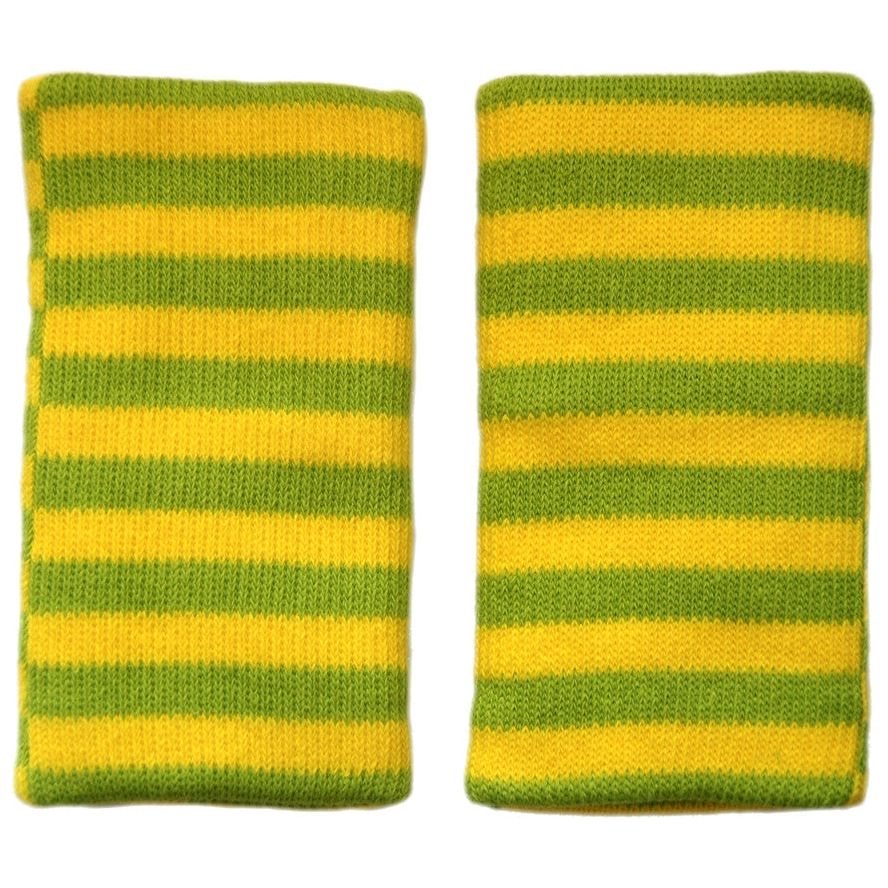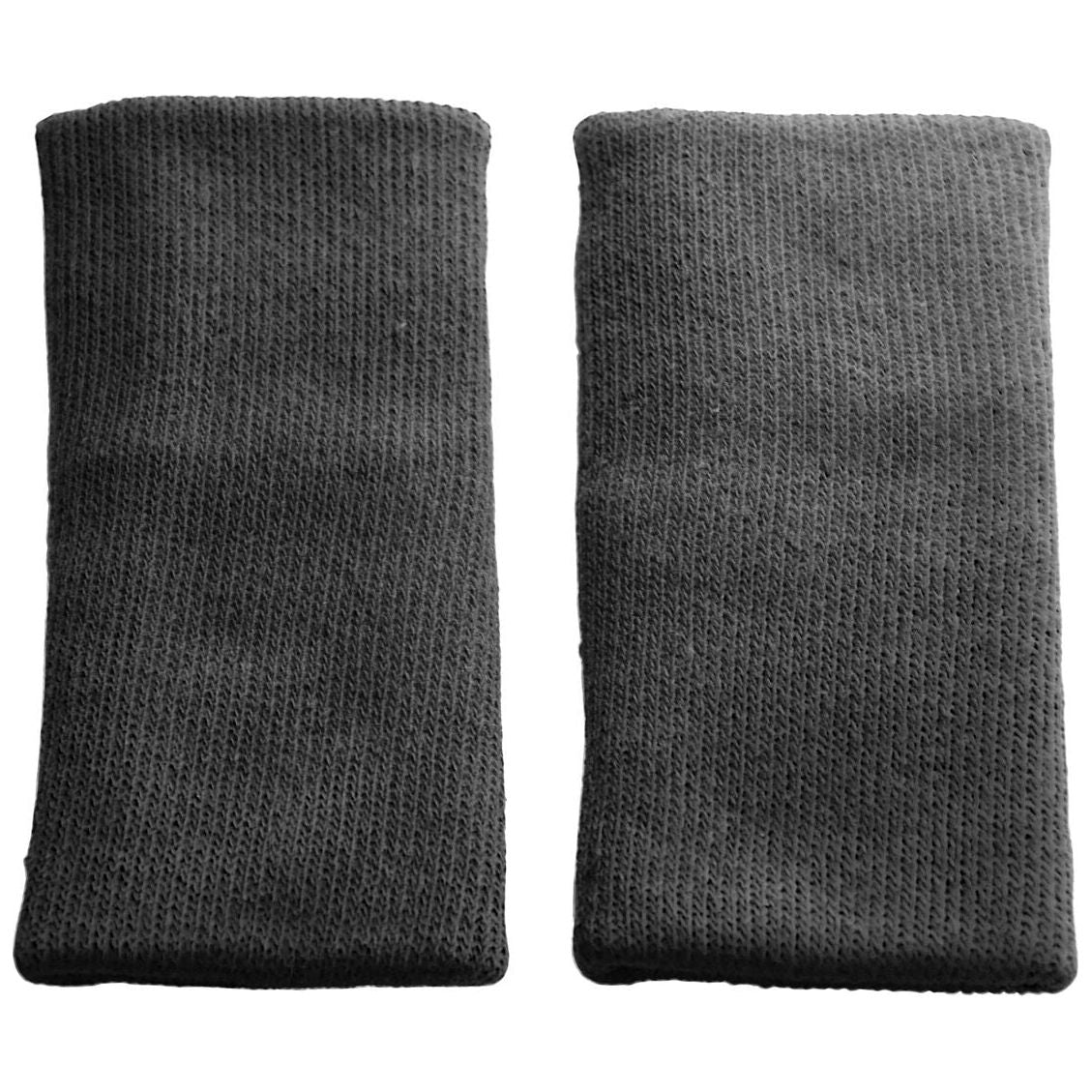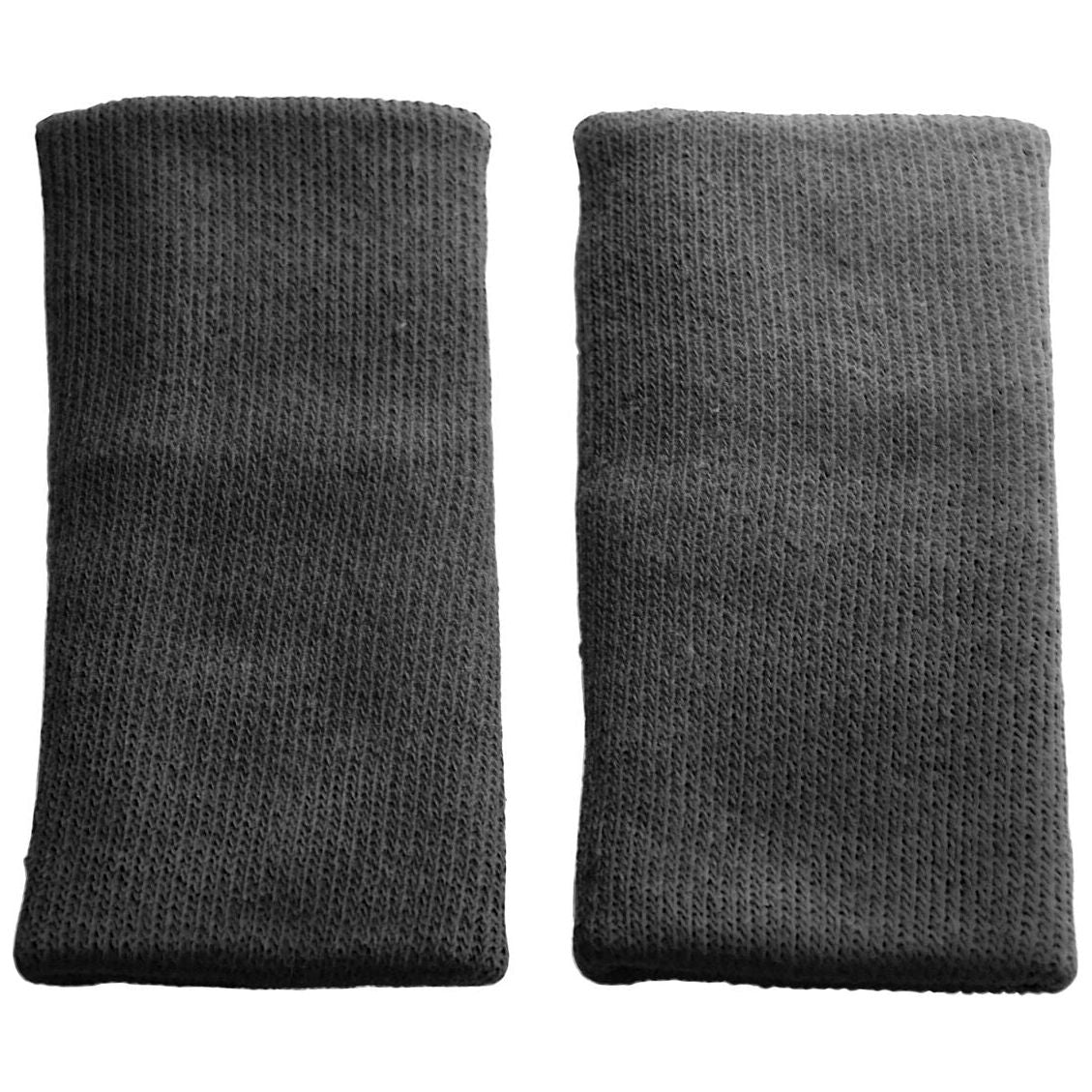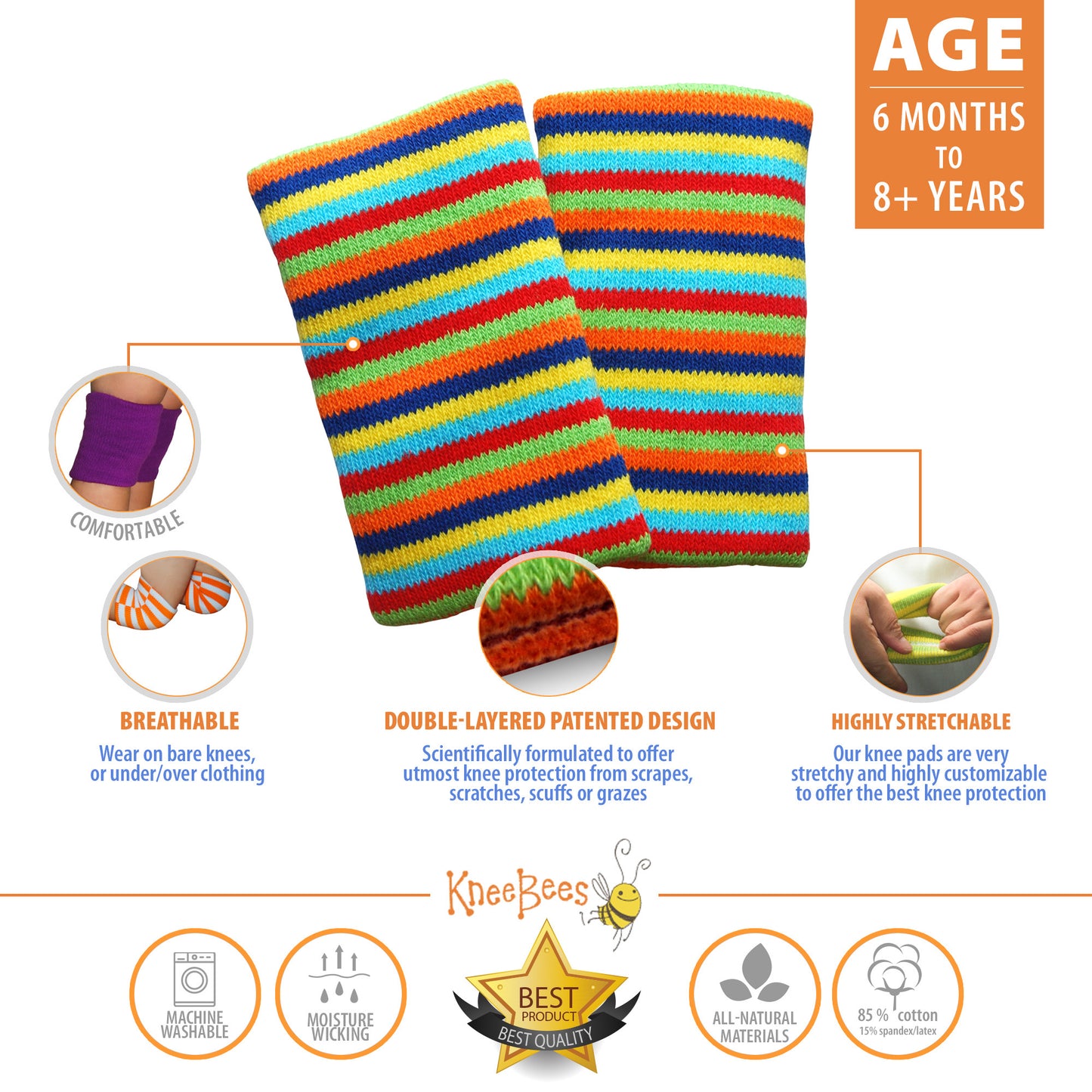[caption id="attachment_1503" align="alignnone" width="320"]

Image taken from http://www.ktvz.com/[/caption]
We, as concerned parents at KneeBees Inc, wanted to share information below with as many people as possible.
First article is from
www.webmd.com :
"A fast-spreading virus related to hand-foot-and-mouth disease is hospitalizing kids across the country.
The virus, called enterovirus D68 or EV-D68, was first discovered in 1962 in California. But until now, it has only been tied to smaller clusters of disease around the U.S.
This is the first time it’s caused such widespread misery, and it seems to be particularly hard on the lungs.
As of Oct. 6, the CDC has confirmed more than 590 cases of EV-D68 in 43 states and Washington, DC. All of the cases have been in children except for one adult case.
Some children with EV-D68 have died, but it’s unclear if the virus directly caused their deaths or was a contributing factor. Health officials are investigating.
A few children hospitalized with EV-D68 have also developed unexplained paralysis in their arms and legs, officials say. The CDC is doing further tests to figure out the cause of the paralysis.
“This could be just coincidental, so we can’t leap to the conclusion that enterovirus D68 is the cause of this paralysis,” says William Schaffner, MD, an infectious disease expert at Vanderbilt University in Nashville, TN. “It’s right at the top of our list of suspects, but we haven’t nailed it yet.”
“Many of us will have EV-D68,” says Michael Fine, MD, director of the Rhode Island Department of Health, in a statement. “Most of us will have very mild symptoms, and all but very few will recover quickly and completely. The vast majority of children exposed to EV-D68 recover completely.”
We reached out to pediatricians and infectious disease specialists to find out what parents should know about this respiratory illness.
What are the symptoms of D68 infection?
Most viral infections start out with a fever, cough, and runny nose, but D68 doesn’t seem to follow that classic pattern, says Mary Anne Jackson, MD. She's the division director of infectious disease at Children’s Mercy Hospital in Kansas City, MO, the hospital where the first cases were identified.
“Only 25% to 30% of our kids have fever, so the vast majority don’t,” Jackson says. Instead, kids with D68 infections have cough and trouble breathing, sometimes with wheezing.
They act like they have asthma, even if they don’t have a history of it, she says. “They’re just not moving air.”
Why so many cases now?
The typical enterovirus season runs from July through October, so we're in an enterovirus season, says Jackson.
What’s unusual about this one is that it’s a virus that hasn’t widely spread through the U.S. before.
“If you have a new virus that has not widely circulated, most people are going to be susceptible,” Jackson says.
The spreading of the virus coincided with the start of the new school year. Many hospitals noticed a big uptick in cases when kids went back to their classrooms.
Unfortunately, Jackson says, the outbreak may get worse before it gets better.
“In order for this virus to stop, it’s going to have to infect enough of the population to provide immunity and essentially burn itself out,” she says.
Who's at greatest risk?
Recent cases have been in children ages 6 months to 16 years, with most hovering around ages 4 and 5, the CDC says.
And while many kids are coming down with milder symptoms, the virus seems to be hitting children with a history of breathing problems particularly hard.
Two-thirds of those hospitalized at Children’s Mercy had a history of asthma or wheezing, Jackson says.
“We made sure that primary care providers are in touch with their patients with asthma, so those have an active asthma plan and know what to do if they get into trouble,” she says.
How is the infection treated?
Because it’s caused by a virus, and not bacteria, antibiotics don’t help.
There is no vaccine to prevent it and no antiviral medication to treat it, says Andi Shane, MD. She's the medical director of hospital epidemiology and associate director of pediatric infectious disease at Children’s Healthcare of Atlanta.
Shane says her hospital is admitting about 100 kids a week with symptoms that are consistent with D68 infections.
She says the virus is treated with supportive care.
“The main thing is giving supplemental oxygen to the children who need it,” she says. Children may also get medications, such as albuterol, which help relax and open the air passages of the lungs.
Those with the most critical cases have needed ventilators to help them breathe.
When do kids need medical attention?
Most kids who get D68 infections will have a milder course of disease that just needs extra TLC, including lots of rest and plenty of fluids.
But it’s time to head to the doctor’s office or emergency room “if there’s any rapid breathing, and that means breathing more than once per second consistently over the span of an hour. Or if there’s any labored breathing,” says Roya Samuels, MD. She's a pediatrician at Steven & Alexandra Cohen Children’s Medical Center in New Hyde Park, N.Y.
Labored breathing, Samuels says, means kids are using smaller muscles around the chest wall to help move air in and out of their lungs.
“If you see the skin pulling in between the ribs or above the collarbone, or if there’s any wheezing, those are clear signs that a child needs to be evaluated,” she says.
How do you catch it?
The bad news is that enteroviruses, which are thought to cause between 10 million and 15 million infections in the U.S. each year, are pretty hardy, says Stephen Morse, PhD. He's an infectious disease expert at Columbia’s Mailman School of Public Health, in New York City.
The “entero-“ part of their name means the viruses can survive stomach acid and infect the gut, as opposed to their cousins, the rhinoviruses, which can’t.
He says these germs can live on surfaces for hours and maybe as long as a day, depending on the temperature and humidity.
“It is a pretty tough virus,” he says.
The virus can be found in saliva, nasal mucus, or sputum, according to the CDC.
Touching a contaminated surface and then rubbing your nose or eyes is the usual way someone catches it. You can also get it from close person-to-person contact.
Protect yourself with good hand-washing habits. Tell kids to cover their mouth with a tissue when they cough. If no tissue is handy, teach them to cough into the crook of their elbow or upper sleeve instead of their hand.
Common disinfectants and detergents will kill enteroviruses, Morse says, so clean frequently touched surfaces like doorknobs and toys according to manufacturers’ directions.
[caption id="attachment_1502" align="alignnone" width="407"]

From CDC[/caption]
Additonal information below is taken directly from CDC website at www.cdc.gov
"Enterovirus D68 (EV-D68) is one of more than 100 non-polio enteroviruses. This virus was first identified in California in 1962.
What are the symptoms of EV-D68 infection?
EV-D68 can cause mild to severe respiratory illness.
Mild symptoms may include fever, runny nose, sneezing, cough, and body and muscle aches.
Severe symptoms may include wheezing and difficulty breathing. See EV-D68 in the U.S., 2014 for details about infections occurring this year.
Anyone with respiratory illness should contact their doctor if they are having difficulty breathing or if their symptoms are getting worse.
How does the virus spread?
Since EV-D68 causes respiratory illness, the virus can be found in an infected person’s respiratory secretions, such as saliva, nasal mucus, or sputum. EV-D68 likely spreads from person to person when an infected person coughs, sneezes, or touches a surface that is then touched by others.
What time of the year are people most likely to get infected?
In the United States, people are more likely to get infected with enteroviruses in the summer and fall. Cases are likely to decline later in the fall.
Keep your child from getting and spreading Enterovirus D68
How common is EV-D68 in the United States?
In general, a mix of enteroviruses circulates every year, and different types of enteroviruses can be common in different years. Small numbers of EV-D68 have been reported regularly to CDC since 1987. However, this year the number of people reported with confirmed EV-D68 infection is much greater than that reported in previous years. See EV-D68 in the U.S., 2014 for details about infections occurring this year.
Who is at risk?
In general, infants, children, and teenagers are most likely to get infected with enteroviruses and become ill. That's because they do not yet have immunity (protection) from previous exposures to these viruses. We believe this is also true for EV-D68. Adults can get infected with enteroviruses, but they are more likely to have no symptoms or mild symptoms.
Children with asthma may have a higher risk for severe respiratory illness caused by EV-D68 infection.
How is it diagnosed?
EV-D68 can only be diagnosed by doing specific lab tests on specimens from a person’s nose and throat.
Many hospitals and some doctor’s offices can test ill patients to see if they have enterovirus infection. However, most cannot do specific testing to determine the type of enterovirus, like EV-D68. CDC and some state health departments can do this sort of testing.
CDC recommends that clinicians only consider EV-D68 testing for patients with severe respiratory illness and when the cause is unclear.
What are the treatments?
There is no specific treatment for people with respiratory illness caused by EV-D68.
For mild respiratory illness, you can help relieve symptoms by taking over-the-counter medications for pain and fever. Aspirin should not be given to children.
Some people with severe respiratory illness may need to be hospitalized.
There are no antiviral medications currently available for people who become infected with EV-D68.
How can I protect myself?
You can help prevent yourself from getting and spreading EV-D68 and other respiratory illnesses by following these steps:
Wash hands often with soap and water for 20 seconds.
Avoid touching eyes, nose and mouth with unwashed hands.
Avoid close contact such as kissing, hugging, and sharing cups or eating utensils with people who are sick.
Cover your coughs and sneezes with a tissue or shirt sleeve, not your hands.
Clean and disinfect frequently touched surfaces, such as toys and doorknobs, especially if someone is sick.
Stay home when you are sick.
Also, see an infographic that shows these prevention steps.
There are no vaccines for preventing EV-D68 infections.
What should people with asthma and children suffering from reactive airway disease do?
Children with asthma are at risk for severe symptoms from EV-D68 and other respiratory illnesses. They should follow CDC’s guidance to maintain control of their illness during this time.
CDC recommends:
Discuss and update your asthma action plan with your primary care provider.
Take your prescribed asthma medications as directed, especially long term control medication(s).
Be sure to keep your reliever medication with you.
Get a flu vaccine when available.
If you develop new or worsening asthma symptoms, follow the steps of your asthma action plan. If your symptoms do not go away, call your doctor right away.
Parents should make sure the child’s caregiver and/or teacher is aware of his/her condition, and that they know how to help if the child experiences any symptoms related to asthma."
 Image taken from http://www.ktvz.com/[/caption]
We, as concerned parents at KneeBees Inc, wanted to share information below with as many people as possible.
First article is from www.webmd.com :
"A fast-spreading virus related to hand-foot-and-mouth disease is hospitalizing kids across the country.
The virus, called enterovirus D68 or EV-D68, was first discovered in 1962 in California. But until now, it has only been tied to smaller clusters of disease around the U.S.
This is the first time it’s caused such widespread misery, and it seems to be particularly hard on the lungs.
As of Oct. 6, the CDC has confirmed more than 590 cases of EV-D68 in 43 states and Washington, DC. All of the cases have been in children except for one adult case.
Some children with EV-D68 have died, but it’s unclear if the virus directly caused their deaths or was a contributing factor. Health officials are investigating.
A few children hospitalized with EV-D68 have also developed unexplained paralysis in their arms and legs, officials say. The CDC is doing further tests to figure out the cause of the paralysis.
“This could be just coincidental, so we can’t leap to the conclusion that enterovirus D68 is the cause of this paralysis,” says William Schaffner, MD, an infectious disease expert at Vanderbilt University in Nashville, TN. “It’s right at the top of our list of suspects, but we haven’t nailed it yet.”
“Many of us will have EV-D68,” says Michael Fine, MD, director of the Rhode Island Department of Health, in a statement. “Most of us will have very mild symptoms, and all but very few will recover quickly and completely. The vast majority of children exposed to EV-D68 recover completely.”
We reached out to pediatricians and infectious disease specialists to find out what parents should know about this respiratory illness.
What are the symptoms of D68 infection?
Most viral infections start out with a fever, cough, and runny nose, but D68 doesn’t seem to follow that classic pattern, says Mary Anne Jackson, MD. She's the division director of infectious disease at Children’s Mercy Hospital in Kansas City, MO, the hospital where the first cases were identified.
“Only 25% to 30% of our kids have fever, so the vast majority don’t,” Jackson says. Instead, kids with D68 infections have cough and trouble breathing, sometimes with wheezing.
They act like they have asthma, even if they don’t have a history of it, she says. “They’re just not moving air.”
Why so many cases now?
The typical enterovirus season runs from July through October, so we're in an enterovirus season, says Jackson.
What’s unusual about this one is that it’s a virus that hasn’t widely spread through the U.S. before.
“If you have a new virus that has not widely circulated, most people are going to be susceptible,” Jackson says.
The spreading of the virus coincided with the start of the new school year. Many hospitals noticed a big uptick in cases when kids went back to their classrooms.
Unfortunately, Jackson says, the outbreak may get worse before it gets better.
“In order for this virus to stop, it’s going to have to infect enough of the population to provide immunity and essentially burn itself out,” she says.
Who's at greatest risk?
Recent cases have been in children ages 6 months to 16 years, with most hovering around ages 4 and 5, the CDC says.
And while many kids are coming down with milder symptoms, the virus seems to be hitting children with a history of breathing problems particularly hard.
Two-thirds of those hospitalized at Children’s Mercy had a history of asthma or wheezing, Jackson says.
“We made sure that primary care providers are in touch with their patients with asthma, so those have an active asthma plan and know what to do if they get into trouble,” she says.
How is the infection treated?
Because it’s caused by a virus, and not bacteria, antibiotics don’t help.
There is no vaccine to prevent it and no antiviral medication to treat it, says Andi Shane, MD. She's the medical director of hospital epidemiology and associate director of pediatric infectious disease at Children’s Healthcare of Atlanta.
Shane says her hospital is admitting about 100 kids a week with symptoms that are consistent with D68 infections.
She says the virus is treated with supportive care.
“The main thing is giving supplemental oxygen to the children who need it,” she says. Children may also get medications, such as albuterol, which help relax and open the air passages of the lungs.
Those with the most critical cases have needed ventilators to help them breathe.
When do kids need medical attention?
Most kids who get D68 infections will have a milder course of disease that just needs extra TLC, including lots of rest and plenty of fluids.
But it’s time to head to the doctor’s office or emergency room “if there’s any rapid breathing, and that means breathing more than once per second consistently over the span of an hour. Or if there’s any labored breathing,” says Roya Samuels, MD. She's a pediatrician at Steven & Alexandra Cohen Children’s Medical Center in New Hyde Park, N.Y.
Labored breathing, Samuels says, means kids are using smaller muscles around the chest wall to help move air in and out of their lungs.
“If you see the skin pulling in between the ribs or above the collarbone, or if there’s any wheezing, those are clear signs that a child needs to be evaluated,” she says.
How do you catch it?
The bad news is that enteroviruses, which are thought to cause between 10 million and 15 million infections in the U.S. each year, are pretty hardy, says Stephen Morse, PhD. He's an infectious disease expert at Columbia’s Mailman School of Public Health, in New York City.
The “entero-“ part of their name means the viruses can survive stomach acid and infect the gut, as opposed to their cousins, the rhinoviruses, which can’t.
He says these germs can live on surfaces for hours and maybe as long as a day, depending on the temperature and humidity.
“It is a pretty tough virus,” he says.
The virus can be found in saliva, nasal mucus, or sputum, according to the CDC.
Touching a contaminated surface and then rubbing your nose or eyes is the usual way someone catches it. You can also get it from close person-to-person contact.
Protect yourself with good hand-washing habits. Tell kids to cover their mouth with a tissue when they cough. If no tissue is handy, teach them to cough into the crook of their elbow or upper sleeve instead of their hand.
Common disinfectants and detergents will kill enteroviruses, Morse says, so clean frequently touched surfaces like doorknobs and toys according to manufacturers’ directions.
[caption id="attachment_1502" align="alignnone" width="407"]
Image taken from http://www.ktvz.com/[/caption]
We, as concerned parents at KneeBees Inc, wanted to share information below with as many people as possible.
First article is from www.webmd.com :
"A fast-spreading virus related to hand-foot-and-mouth disease is hospitalizing kids across the country.
The virus, called enterovirus D68 or EV-D68, was first discovered in 1962 in California. But until now, it has only been tied to smaller clusters of disease around the U.S.
This is the first time it’s caused such widespread misery, and it seems to be particularly hard on the lungs.
As of Oct. 6, the CDC has confirmed more than 590 cases of EV-D68 in 43 states and Washington, DC. All of the cases have been in children except for one adult case.
Some children with EV-D68 have died, but it’s unclear if the virus directly caused their deaths or was a contributing factor. Health officials are investigating.
A few children hospitalized with EV-D68 have also developed unexplained paralysis in their arms and legs, officials say. The CDC is doing further tests to figure out the cause of the paralysis.
“This could be just coincidental, so we can’t leap to the conclusion that enterovirus D68 is the cause of this paralysis,” says William Schaffner, MD, an infectious disease expert at Vanderbilt University in Nashville, TN. “It’s right at the top of our list of suspects, but we haven’t nailed it yet.”
“Many of us will have EV-D68,” says Michael Fine, MD, director of the Rhode Island Department of Health, in a statement. “Most of us will have very mild symptoms, and all but very few will recover quickly and completely. The vast majority of children exposed to EV-D68 recover completely.”
We reached out to pediatricians and infectious disease specialists to find out what parents should know about this respiratory illness.
What are the symptoms of D68 infection?
Most viral infections start out with a fever, cough, and runny nose, but D68 doesn’t seem to follow that classic pattern, says Mary Anne Jackson, MD. She's the division director of infectious disease at Children’s Mercy Hospital in Kansas City, MO, the hospital where the first cases were identified.
“Only 25% to 30% of our kids have fever, so the vast majority don’t,” Jackson says. Instead, kids with D68 infections have cough and trouble breathing, sometimes with wheezing.
They act like they have asthma, even if they don’t have a history of it, she says. “They’re just not moving air.”
Why so many cases now?
The typical enterovirus season runs from July through October, so we're in an enterovirus season, says Jackson.
What’s unusual about this one is that it’s a virus that hasn’t widely spread through the U.S. before.
“If you have a new virus that has not widely circulated, most people are going to be susceptible,” Jackson says.
The spreading of the virus coincided with the start of the new school year. Many hospitals noticed a big uptick in cases when kids went back to their classrooms.
Unfortunately, Jackson says, the outbreak may get worse before it gets better.
“In order for this virus to stop, it’s going to have to infect enough of the population to provide immunity and essentially burn itself out,” she says.
Who's at greatest risk?
Recent cases have been in children ages 6 months to 16 years, with most hovering around ages 4 and 5, the CDC says.
And while many kids are coming down with milder symptoms, the virus seems to be hitting children with a history of breathing problems particularly hard.
Two-thirds of those hospitalized at Children’s Mercy had a history of asthma or wheezing, Jackson says.
“We made sure that primary care providers are in touch with their patients with asthma, so those have an active asthma plan and know what to do if they get into trouble,” she says.
How is the infection treated?
Because it’s caused by a virus, and not bacteria, antibiotics don’t help.
There is no vaccine to prevent it and no antiviral medication to treat it, says Andi Shane, MD. She's the medical director of hospital epidemiology and associate director of pediatric infectious disease at Children’s Healthcare of Atlanta.
Shane says her hospital is admitting about 100 kids a week with symptoms that are consistent with D68 infections.
She says the virus is treated with supportive care.
“The main thing is giving supplemental oxygen to the children who need it,” she says. Children may also get medications, such as albuterol, which help relax and open the air passages of the lungs.
Those with the most critical cases have needed ventilators to help them breathe.
When do kids need medical attention?
Most kids who get D68 infections will have a milder course of disease that just needs extra TLC, including lots of rest and plenty of fluids.
But it’s time to head to the doctor’s office or emergency room “if there’s any rapid breathing, and that means breathing more than once per second consistently over the span of an hour. Or if there’s any labored breathing,” says Roya Samuels, MD. She's a pediatrician at Steven & Alexandra Cohen Children’s Medical Center in New Hyde Park, N.Y.
Labored breathing, Samuels says, means kids are using smaller muscles around the chest wall to help move air in and out of their lungs.
“If you see the skin pulling in between the ribs or above the collarbone, or if there’s any wheezing, those are clear signs that a child needs to be evaluated,” she says.
How do you catch it?
The bad news is that enteroviruses, which are thought to cause between 10 million and 15 million infections in the U.S. each year, are pretty hardy, says Stephen Morse, PhD. He's an infectious disease expert at Columbia’s Mailman School of Public Health, in New York City.
The “entero-“ part of their name means the viruses can survive stomach acid and infect the gut, as opposed to their cousins, the rhinoviruses, which can’t.
He says these germs can live on surfaces for hours and maybe as long as a day, depending on the temperature and humidity.
“It is a pretty tough virus,” he says.
The virus can be found in saliva, nasal mucus, or sputum, according to the CDC.
Touching a contaminated surface and then rubbing your nose or eyes is the usual way someone catches it. You can also get it from close person-to-person contact.
Protect yourself with good hand-washing habits. Tell kids to cover their mouth with a tissue when they cough. If no tissue is handy, teach them to cough into the crook of their elbow or upper sleeve instead of their hand.
Common disinfectants and detergents will kill enteroviruses, Morse says, so clean frequently touched surfaces like doorknobs and toys according to manufacturers’ directions.
[caption id="attachment_1502" align="alignnone" width="407"] From CDC[/caption]
Additonal information below is taken directly from CDC website at www.cdc.gov
"Enterovirus D68 (EV-D68) is one of more than 100 non-polio enteroviruses. This virus was first identified in California in 1962.
What are the symptoms of EV-D68 infection?
EV-D68 can cause mild to severe respiratory illness.
Mild symptoms may include fever, runny nose, sneezing, cough, and body and muscle aches.
Severe symptoms may include wheezing and difficulty breathing. See EV-D68 in the U.S., 2014 for details about infections occurring this year.
Anyone with respiratory illness should contact their doctor if they are having difficulty breathing or if their symptoms are getting worse.
How does the virus spread?
Since EV-D68 causes respiratory illness, the virus can be found in an infected person’s respiratory secretions, such as saliva, nasal mucus, or sputum. EV-D68 likely spreads from person to person when an infected person coughs, sneezes, or touches a surface that is then touched by others.
What time of the year are people most likely to get infected?
In the United States, people are more likely to get infected with enteroviruses in the summer and fall. Cases are likely to decline later in the fall.
Keep your child from getting and spreading Enterovirus D68
How common is EV-D68 in the United States?
In general, a mix of enteroviruses circulates every year, and different types of enteroviruses can be common in different years. Small numbers of EV-D68 have been reported regularly to CDC since 1987. However, this year the number of people reported with confirmed EV-D68 infection is much greater than that reported in previous years. See EV-D68 in the U.S., 2014 for details about infections occurring this year.
Who is at risk?
In general, infants, children, and teenagers are most likely to get infected with enteroviruses and become ill. That's because they do not yet have immunity (protection) from previous exposures to these viruses. We believe this is also true for EV-D68. Adults can get infected with enteroviruses, but they are more likely to have no symptoms or mild symptoms.
Children with asthma may have a higher risk for severe respiratory illness caused by EV-D68 infection.
How is it diagnosed?
EV-D68 can only be diagnosed by doing specific lab tests on specimens from a person’s nose and throat.
Many hospitals and some doctor’s offices can test ill patients to see if they have enterovirus infection. However, most cannot do specific testing to determine the type of enterovirus, like EV-D68. CDC and some state health departments can do this sort of testing.
CDC recommends that clinicians only consider EV-D68 testing for patients with severe respiratory illness and when the cause is unclear.
What are the treatments?
There is no specific treatment for people with respiratory illness caused by EV-D68.
For mild respiratory illness, you can help relieve symptoms by taking over-the-counter medications for pain and fever. Aspirin should not be given to children.
Some people with severe respiratory illness may need to be hospitalized.
There are no antiviral medications currently available for people who become infected with EV-D68.
How can I protect myself?
You can help prevent yourself from getting and spreading EV-D68 and other respiratory illnesses by following these steps:
Wash hands often with soap and water for 20 seconds.
Avoid touching eyes, nose and mouth with unwashed hands.
Avoid close contact such as kissing, hugging, and sharing cups or eating utensils with people who are sick.
Cover your coughs and sneezes with a tissue or shirt sleeve, not your hands.
Clean and disinfect frequently touched surfaces, such as toys and doorknobs, especially if someone is sick.
Stay home when you are sick.
Also, see an infographic that shows these prevention steps.
There are no vaccines for preventing EV-D68 infections.
What should people with asthma and children suffering from reactive airway disease do?
Children with asthma are at risk for severe symptoms from EV-D68 and other respiratory illnesses. They should follow CDC’s guidance to maintain control of their illness during this time.
CDC recommends:
Discuss and update your asthma action plan with your primary care provider.
Take your prescribed asthma medications as directed, especially long term control medication(s).
Be sure to keep your reliever medication with you.
Get a flu vaccine when available.
If you develop new or worsening asthma symptoms, follow the steps of your asthma action plan. If your symptoms do not go away, call your doctor right away.
Parents should make sure the child’s caregiver and/or teacher is aware of his/her condition, and that they know how to help if the child experiences any symptoms related to asthma."
From CDC[/caption]
Additonal information below is taken directly from CDC website at www.cdc.gov
"Enterovirus D68 (EV-D68) is one of more than 100 non-polio enteroviruses. This virus was first identified in California in 1962.
What are the symptoms of EV-D68 infection?
EV-D68 can cause mild to severe respiratory illness.
Mild symptoms may include fever, runny nose, sneezing, cough, and body and muscle aches.
Severe symptoms may include wheezing and difficulty breathing. See EV-D68 in the U.S., 2014 for details about infections occurring this year.
Anyone with respiratory illness should contact their doctor if they are having difficulty breathing or if their symptoms are getting worse.
How does the virus spread?
Since EV-D68 causes respiratory illness, the virus can be found in an infected person’s respiratory secretions, such as saliva, nasal mucus, or sputum. EV-D68 likely spreads from person to person when an infected person coughs, sneezes, or touches a surface that is then touched by others.
What time of the year are people most likely to get infected?
In the United States, people are more likely to get infected with enteroviruses in the summer and fall. Cases are likely to decline later in the fall.
Keep your child from getting and spreading Enterovirus D68
How common is EV-D68 in the United States?
In general, a mix of enteroviruses circulates every year, and different types of enteroviruses can be common in different years. Small numbers of EV-D68 have been reported regularly to CDC since 1987. However, this year the number of people reported with confirmed EV-D68 infection is much greater than that reported in previous years. See EV-D68 in the U.S., 2014 for details about infections occurring this year.
Who is at risk?
In general, infants, children, and teenagers are most likely to get infected with enteroviruses and become ill. That's because they do not yet have immunity (protection) from previous exposures to these viruses. We believe this is also true for EV-D68. Adults can get infected with enteroviruses, but they are more likely to have no symptoms or mild symptoms.
Children with asthma may have a higher risk for severe respiratory illness caused by EV-D68 infection.
How is it diagnosed?
EV-D68 can only be diagnosed by doing specific lab tests on specimens from a person’s nose and throat.
Many hospitals and some doctor’s offices can test ill patients to see if they have enterovirus infection. However, most cannot do specific testing to determine the type of enterovirus, like EV-D68. CDC and some state health departments can do this sort of testing.
CDC recommends that clinicians only consider EV-D68 testing for patients with severe respiratory illness and when the cause is unclear.
What are the treatments?
There is no specific treatment for people with respiratory illness caused by EV-D68.
For mild respiratory illness, you can help relieve symptoms by taking over-the-counter medications for pain and fever. Aspirin should not be given to children.
Some people with severe respiratory illness may need to be hospitalized.
There are no antiviral medications currently available for people who become infected with EV-D68.
How can I protect myself?
You can help prevent yourself from getting and spreading EV-D68 and other respiratory illnesses by following these steps:
Wash hands often with soap and water for 20 seconds.
Avoid touching eyes, nose and mouth with unwashed hands.
Avoid close contact such as kissing, hugging, and sharing cups or eating utensils with people who are sick.
Cover your coughs and sneezes with a tissue or shirt sleeve, not your hands.
Clean and disinfect frequently touched surfaces, such as toys and doorknobs, especially if someone is sick.
Stay home when you are sick.
Also, see an infographic that shows these prevention steps.
There are no vaccines for preventing EV-D68 infections.
What should people with asthma and children suffering from reactive airway disease do?
Children with asthma are at risk for severe symptoms from EV-D68 and other respiratory illnesses. They should follow CDC’s guidance to maintain control of their illness during this time.
CDC recommends:
Discuss and update your asthma action plan with your primary care provider.
Take your prescribed asthma medications as directed, especially long term control medication(s).
Be sure to keep your reliever medication with you.
Get a flu vaccine when available.
If you develop new or worsening asthma symptoms, follow the steps of your asthma action plan. If your symptoms do not go away, call your doctor right away.
Parents should make sure the child’s caregiver and/or teacher is aware of his/her condition, and that they know how to help if the child experiences any symptoms related to asthma."


























